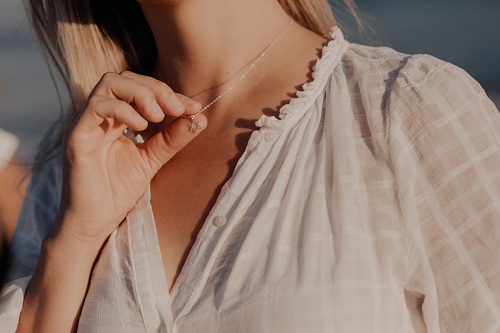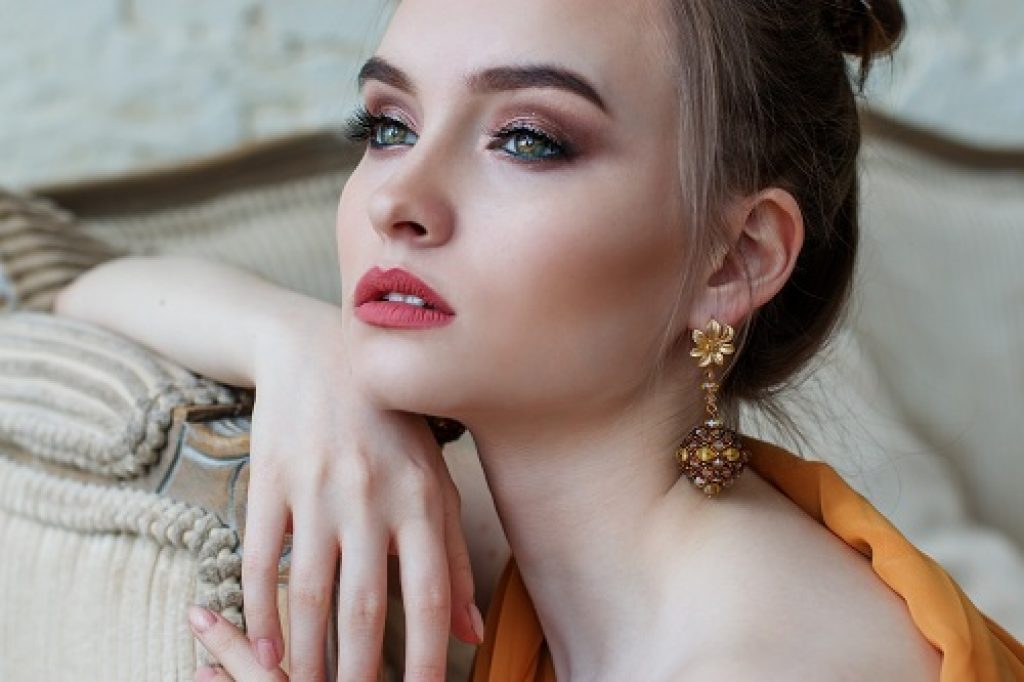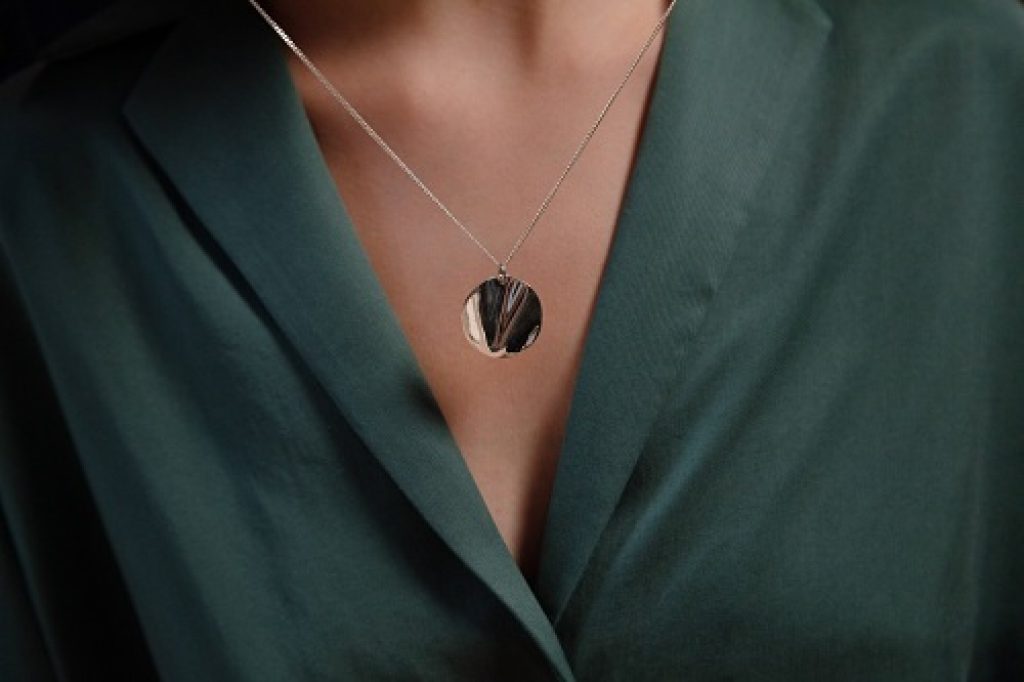
Silver or Gold? Which jewelry will suit my skin tone? If you’re looking for an answer to this question then stay tuned. We’re gonna walk you through the fundamental concept of this gold versus silver jewelry. You’ll be thinking what’s that, It’s an “undertone”.
Don’t worry if you’re unaware of this term. We’re going to cover that and also discuss methods for finding your undertone.
Under tone:
When it comes to jewelry a rule of thumb is that gold will compliment warm undertones and silver compliments a cool undertone. But what is an undertone, you may ask. So let’s clear that first.
Difference between skin tone and undertone:
If skin tone and undertone aren’t the same things, then what’s the difference between them? Let’s see.
What is skin tone?
Skin tone is the colour of your skin in daylight, or you can call it your complexion. It ranges from fair to dark and every shade in between them. Skin tone is just the natural colour that you see. It’s determined by how much melanin your skin has. This can change in the summer and winter due to tan. So your skin tone changes but your undertone doesn’t.
What is the undertone?
Undertone is the colour under your skin that either makes it look cool or warm. Have you ever tried to mix paints and get the colour of your skin? If yes, you’ll know that you’ve to combine many different colours (including red, green, blue and yellow). After mixing you don’t see those colours but they’re there in the components. All these colours that you mix make the undertone.

Types of undertones:
There are 4 types of undertones.
- Warm undertone: It has a yellowish effect on it
- Cool undertone: It has a bluish colour
- Neutral undertone: No specific colour is dominant
- Olive undertone: It has a greenish tint
Gold looks great on people with a warm undertone and silver goes with a cool undertone. People having a neutral undertone can wear both. Lastly, olive undertones look great with dull gold and silver.
How to find your undertone?
First, find a place with natural daylight. No artificial light or direct sunlight can change the results.
Tip: Try as many tests as you can. There’s no guarantee that any one test can give you the right results.
-
The vein colour test:
This is the most common method of finding your undertone. Ensure that you’re getting natural daylight. No artificial lights or direct sunlight can change the results. Now, look at the veins of your wrist,
- If they appear bluish or purplish it means you’ve got a cool undertone.
- If they give a greenish tint then you’re warm.
- If you can’t tell the colour or they look both green and blue then you’ve got a neutral undertone.
- Strong green means olive undertone.
-
The jewelry test:
Take a silver and gold piece of jewelry. Put them on your skin one by one and see which metal makes your skin look more vibrant and healthy. Do this test in natural light as well.
- If golden suits your skin it means your undertone is warm.
- If silver looks good on you then you’ve got a cool undertone.
- If both look the same you might be neutral.
- If both don’t look that great on you or you prefer the nude or dull versions of gold and silver then your undertone is olive.
Make sure you’ve no makeup on while doing this test. Please don’t compare the jewelry with your face as it gets a lot of sunlight. You can compare it with your neck or your arm as they don’t get affected by the sun that much.
-
White sheet test:
In this test, we’re going to compare a pure white colour with our skin. You need natural light for this one as well. Wear a white shirt and tie your hair to the back. It’s even better if you wrap a white towel or a white cloth around them. Compare the colour of your skin with pure white.
You can also take a white sheet of paper and put it next to your arm or leg to compare your skin colour. You need to compare the natural colour of your skin, not the tanned one.
- Reddish, pinkish or rosier means cool.
- Yellowish is a warm undertone.
- If you don’t see much difference with and without the paper you’re neutral.
- If you see green a bit then you’re olive.
Tip: Sometimes our skin is red just around the cheeks and nose but the whole body colour is different. Don’t let that small part deceive you. Compare it with your actual skin colour.
-
The sun test:
This is an observatory test. Think about how your skin reacts to the sun.
- If it burns directly without tanning then you’re cool.
- If your skin tans but doesn’t burn, you have a warm undertone.
- If it burns first then tans or tans gradually then it means you’re either neutral or olive.
-
Eye test:
Let’s observe the colour of your eyes. This test can’t give you the exact results but it’s suitable for confirmation. If your eyes are,
- Dark brown, blue or grey: cool undertone
- Light brown, hazel, amber or green: warm undertone
- Neutral and olives can have any eye colour
Tip: Get your friends and family members with you while doing these tests. Their opinions and judgement will help you reach an accurate answer.

-
The Colour test:
In this test, we’ll compare how you look in pure black and white versus in browns and off-whites. Drape or wear shirts and tops of these colours and observe yourself.
- If pure white and black look good on you it means you’ve got a cool undertone.
- If off-white, browns or dark greys suit you better then you’re warm undertoned.
- If you think both look the same on you then you’re neutral.
-
Clothing test:
What colours are the most in your closet? What colours you are attracted to when you go out shopping? Also, consider when people have complimented you. What colours were you wearing at that time?
- If the answer is yellowish, brown and sunset vibe colours you’re warm.
- If it’s blue, purple and cool bright colours then you might have a cool undertone.
- If you can’t reach a decision then might be neutral undertoned.
Contrast:
It’s a simple design rule while mix-matching the colours. The 2 colours you’ve selected should be contrasting. If you choose a beige colour on a white background it won’t look great. However, if you go with yellow on a red background it will get more eyeballs. It’s because they have high contrast between them.
The same rule applies to our situation. Think like your skin is a canvas or background, and you’re putting colours on it in the form of jewelry. Jewelry pieces having high contrast with your skin tone will make you look more vibrant.
Don’t limit yourself:
Doesn’t all this seem like a rule? Yes, it does and this rule works for many people. However, it doesn’t mean you can’t wear gold if you’re cool undertoned. Don’t limit yourself and your creativity. If gold looks good on you then wear it. If you feel confident in what you’re wearing you’ll look gorgeous. It’s good to dress up according to your undertone and style but don’t limit yourself to that. No one’s gonna question you why you’re wearing a sparkly silver necklace when you’re olive undertoned.
Conclusion:
We hope you’ve got the answer to silver versus gold jewelry. And now you know what will suit your skin.
Your skin tone has very less to do with this. Your undertone is what decides whether silver jewelry will suit you or gold.







